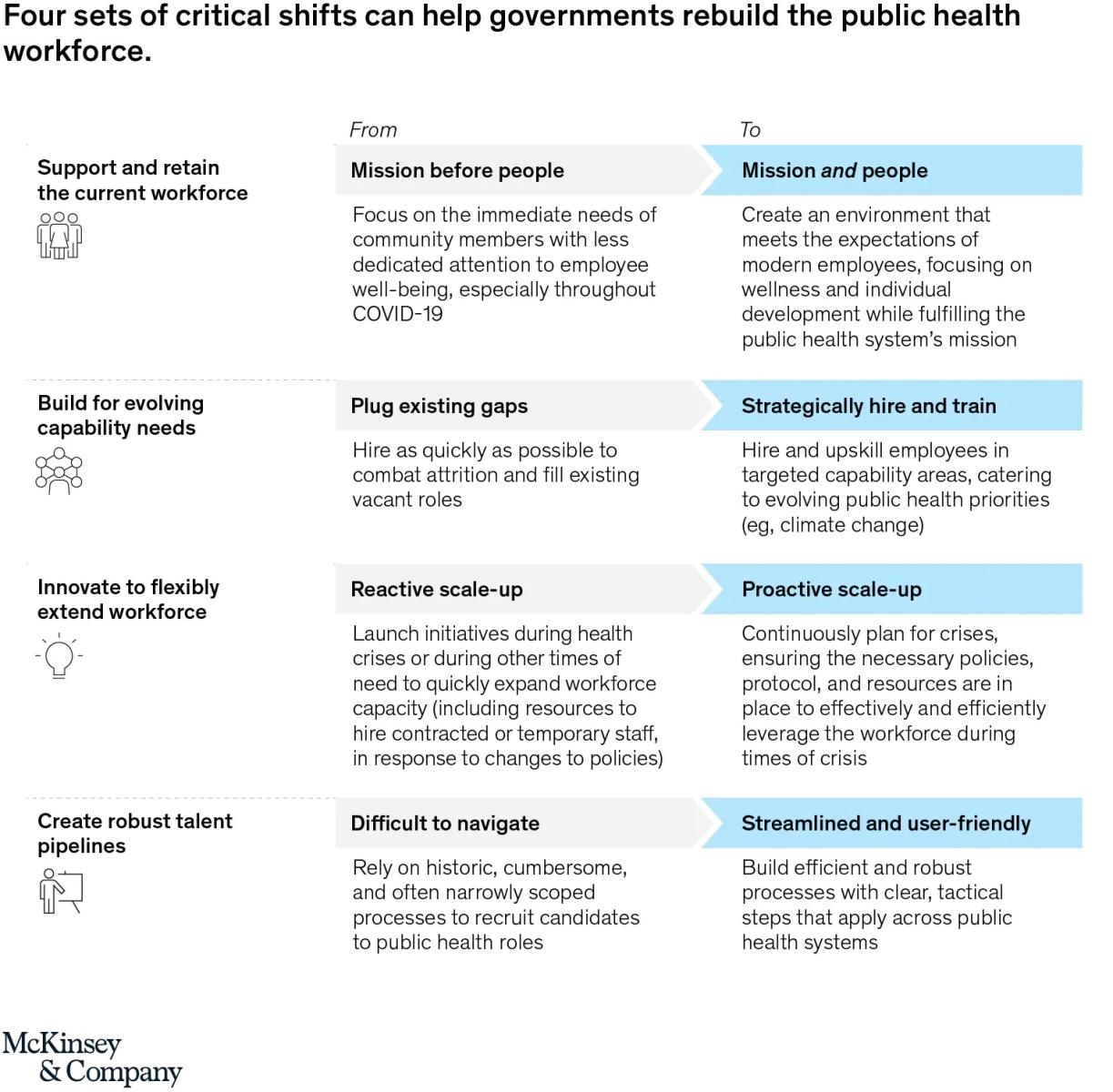
What governments can do to care for health workforces
Shortage in the public health workforce is expected to worsen.
The shortage of health workers was magnified by the pandemic, but this could worsen if governments fail to take action starting with bringing more focus on their wellness.
Citing a Lancet report, it was noted that the health workforce was already short by approximately 43 million in 2019.
“The shortage is likely to increase due to supply-side constraints and evolving demand. Moreover, trends indicate that supply shortages could continue to worsen,” McKinsey noted.
In this light, the consulting firm recommended four critical shifts that must be taken to rebuild the public health workforce.

In terms of supporting and retaining the current workforce, governments will need to create an environment that zeroes in on wellness and individual development. This opposes the previous practice that leaves little attention to employees’ well-being.
They must also hire and upskill employees in targeted capability areas as well as continuously plan for crises by putting in place necessary policies and protocols.
Moreover, to create a robust talent pipeline, governments will need to streamline processes across public health systems.
“If properly redesigned and implemented, the full ecosystem—including the central public health system, local public health systems, and global healthcare delivery systems—could be improved for generations to come,” the report also read.













